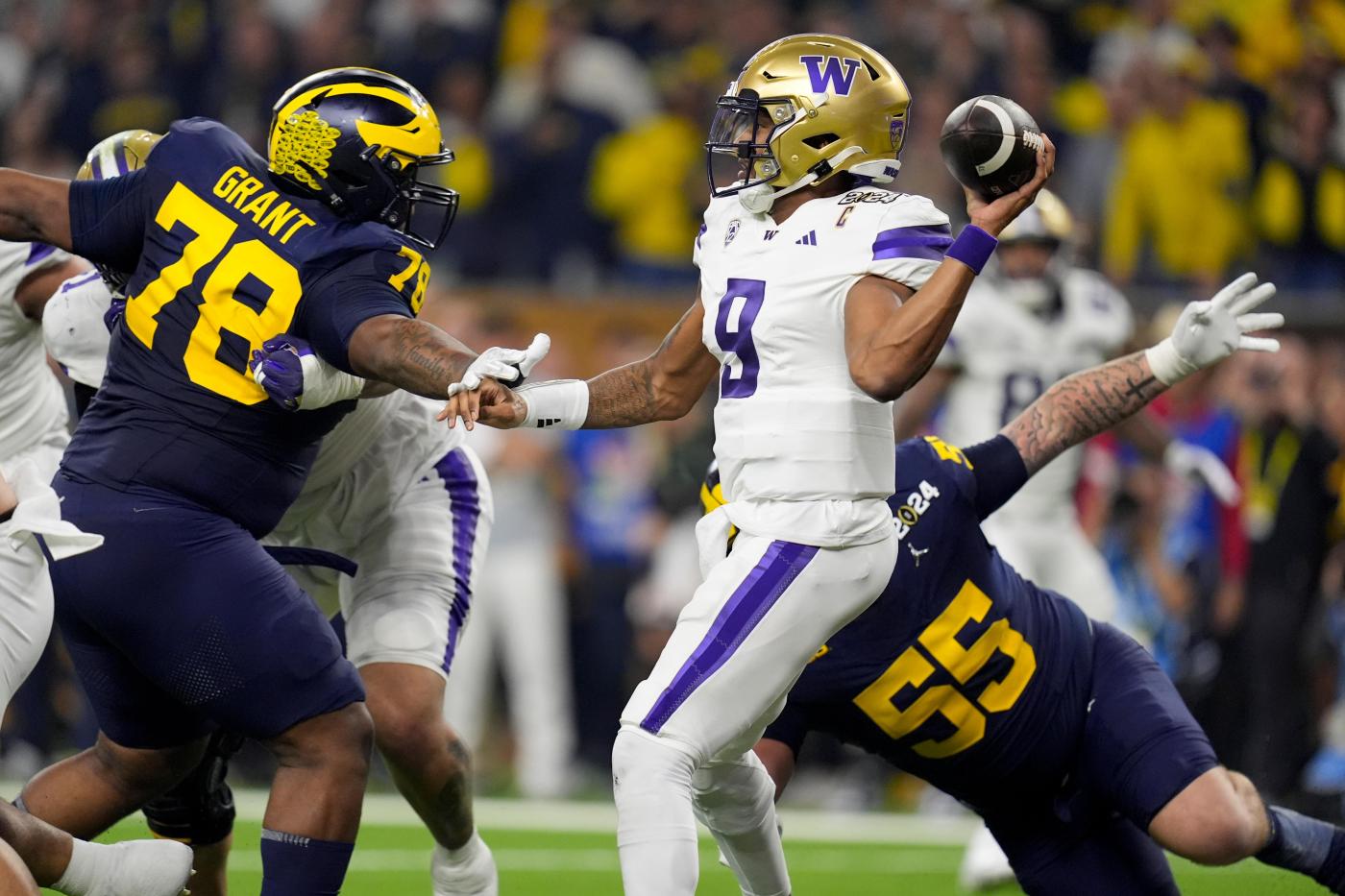SCOTTSDALE — Big Ten football has a math problem to resolve before it becomes a math calamity: How do you break ties in a league with 18 teams, no divisions and eight conference misses?
“We have to reinvent what we had,” Big Ten Chief Operating Officer Kerry Kenny told the Hotline last week at the annual Fiesta Summit gathering for college sports executives.
“What we had was based on divisions, and we didn’t have to worry about who missed who.”
The Big Ten went to the division format and implemented a championship game in 2011, after Nebraska pushed the membership to 12 schools.
It will remove the divisions but not the championship when USC, UCLA, Oregon and Washington arrive this summer to create an 18-team behemoth, the largest conference in major college football. In the division-less structure, the top-two finishers will advance to the title game.
Each team will play nine league opponents and miss eight.
It’s easy to see chaos coming, with multiple teams tied for second place, no head-to-head advantage, a dearth of common opponents and no way to break the deadlock with three or four of the standard tiebreaker steps.
If the issue isn’t at the top of Kenny’s priority list, it’s close. And because the 12-team College Football Playoff begins this year, there’s more to the Big Ten tiebreaker than simply identifying two teams for the title matchup in Indianapolis.
The Big Ten champion will receive an automatic bid to the expanded playoff, but a handful of non-champions could be under consideration for any of the seven at-large berths.
“As we transition to No. 1 vs. No. 2,” Kenny said, “we have to think through the entirety of the tiebreaker because there will be CFP considerations for the teams that finish fourth, fifth, sixth.
“It’s not just about No. 1 and 2. It’s about all of it.”
Kenny went through an intricate process last fall when the Big Ten formulated a conference schedule rotation for the next five years.
After assessing 262 different versions, the conference settled on the so-called “Flex Protect XVIII” model. It took into account travel by distance, regions of the conference and time zones. The model also considered what the Big Ten described as “historic competitiveness and recent competitive trends, including home/away balance of traditionally competitive schools.”
In one sense, the basketball tiebreaker provides a rough model for football because it’s designed to break deadlocks throughout the standings in order to establish seeds for the conference tournament.
But there are no misses in basketball. Each team plays every other team at least once, and the head-to-head results provide a baseline from which to break ties.
“The misses are the biggest issue with football,” Kenny said. “In divisions, you generally don’t have large clusters of teams that look the same.”
At no time during the 13 years of the division format did more than two teams tie for first place — head-to-head settled everything.
Without divisions, and with the likelihood that head-to-head won’t apply because of the misses, the formula starts to look less like subtraction and more like something suitable for Isaac Newton.
“If you have a group with one common opponent,” Kenny said, “it makes you go deeper in the process, and you want to have it figured out before you get to the coin flip.
“We’re looking at whether there are other analytics we can pull in.”
Whatever process the conference eventually implements, it must be ironclad at the top and the middle.
“With the CFP, you have to work up how you go deeper in the process,” Kenny said. “You have to make strong, educated assumptions. The goal is not to get into a situation you can’t resolve.
“We want something that everyone can agree with and allows us to put the best teams forward, to Indianapolis and into the playoff.”
Related Articles
Mailbag: Utah’s post-Whittingham plan, Big Ten kickoffs, USC’s valuation, Colorado’s outlook, BYU’s win total and more
Cal, Stanford football programs at crossroads: Our to-do list for the new campus leaders
Pac-12 recruiting: Ranking top prospects for 2027 NFL Draft
Big 12 commissioner Brett Yormark talks CFP expansion and cash, the “look-in” provision and March Madness
2025 NFL Draft: Our projections for the top West Coast prospects
*** Send suggestions, comments and tips (confidentiality guaranteed) to pac12hotline@bayareanewsgroup.com or call 408-920-5716
*** Follow me on Twitter/X: @WilnerHotline
*** Pac-12 Hotline is not endorsed or sponsored by the Pac-12 Conference, and the views expressed herein do not necessarily reflect the views of the Conference.












